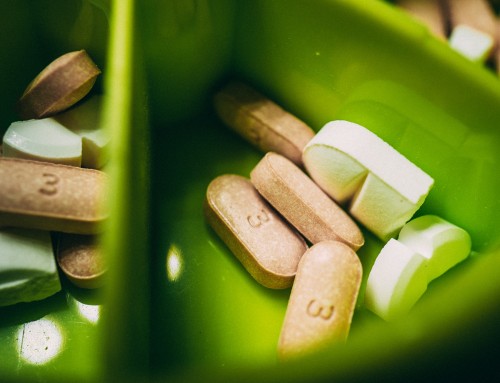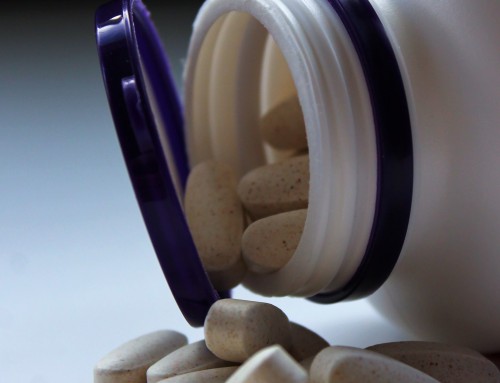Caffeine – The Full Guide!
Caffeine use in Sport
For many years caffeine has been widely used as an ergogenic aid to enhance performance. The main use of this aid has been as a stimulant. There have been many studies of caffeine’s effect on both the aerobic system , (1, 2), (exercising with oxygen), and the anaerobic system , (3, 4, 5), (exercise which does not require oxygen), on sporting performance. This article will aim to assess the legitimacy of caffeine use in sport.
Anaerobic Exercise
Research looking into the effects of caffeine on the anaerobic system have been varied from reporting positive effects (6, 7, 1), to showing no significant effects on exercise (8, 4). In some cases caffeine has actually been shown to cause a decline in average power output (9, 10).
Greer et al (5) looked at the effects of caffeine during repeated bouts of high intensity wingate exercise using a control and placebo group of participants. No differences in either peak or mean power output were observed between the two groups with a decline in the control group in the latter bouts.
In the study, subjects were asked to repeat the wingate tests four times with four minutes rest in between. This would increase the chances of finding a difference due to the caffeine having had time to take effect on the participants. The results are concurrent with some other studies (8, 4), but are also in contrast to the results of other studies (6,7). Among the suggested reasons for why results are still inconclusive include the training state of the participants (11), and the amount of caffeine ingested prior to exercise (12).
Mechanisms and benefits of caffeine
The physiological effects of caffeine supplementation have been suggested by Kalmar & Cafarelli (3). They looked at the effects of caffeine on neuromuscular function. Their study found a significant difference in maximal voluntary contraction, (the greatest amount of force that a muscle can exert), but no difference in the reflexes of the tibial nerve. They suggested that from these findings it was possible that the reason for the significant increase in maximal voluntary contraction was due to caffeine blocking the adenosine receptor which allows the increase of neurotransmitters; adrenaline and dopamine.
Bruce et al (13), suggested that instead of caffeine activating the central nervous system it was the peripheral nervous system that was affected with alterations in skeletal muscles by greater motor recruitment. The increase of calcium release will allow greater muscle fibre recruitment which can allow for a much greater muscle force production. However Bell et al (14) reported an increased time to exhaustion and argued that their results suggested enhanced skeletal muscle metabolism rather than the effects upon the peripheral nervous system was the cause for the increase in performance; they further suggested that it is due to an indirect effect of caffeine upon adrenaline during exercise.
The suggested benefits of caffeine supplementation include the ability to attain greater use of fat as an energy source and sparing of muscle glycogen (15). It has also been suggested that there is an increase of calcium release from the sarcoplasmic reticulum, which can create a greater muscle force production (16, 17).
Dosage
Previous studies have allocated the amount of caffeine consumed based on the subject’s body weight with the most effective type of dose being 5mg.kg-1 (18, 7, 19, 20). Smith et al (12) combined caffeine with other supplements; the amount of caffeine consumed in this study was only 100mg, as the body weight of the subjects ranged from 46.1kg to 108.9 kg the caffeine doses were between 1 to 2.2 mg.kg-1, which is a very low amount of caffeine to make a significant difference.
References
1 – Wiles, J. D, Bird, S. R, Hopkins, J. & Riley, M. (1992). Effect of caffeinated coffee on running speed, respiratory factors, blood lactate and perceived exertion during 1500-m treadmill running. British journal of sports medicine, 26 (11), 116-120.
2- Jackman, M., Wendling, P., Friars, D. & Graham, T. (1996). Metabolic, catecholamine, and endurance responses to caffeine during intense exercise. Journal of Applied Physiology, 81 (4), 1658—1663
3- Kalmar, J. M & Cafarelli. E. (1998). Effects of caffeine on neuromuscular function. Journal of Applied Physiology, 87(2), 801-808.
4- Collomp, K., Ahmaidi, S., Audran, M., Chanal, J. L. & Prefaut, C. (1991). Effects of caffeine ingestion on performance and anaerobic metabolism during the Wingate test. International Journal of sports medicine, 12 (5), 439-443.
5 – Greer, F., Mclean, C. & Graham T. E. (1998). Caffeine, performance, and metabolism during repeated Wingate exercise tests. Journal of applied physiology, 85 (4), 1502-1508.
6 – Anselme, F., Collomp, K., Mercier, B., Ahmaidi, S. & Prefaut. C. (1992). Caffeine increases maximal power and blood lactate concentration. European journal of Applied Physiology, 65 (2), 188–191.
7 – Collomp, K., Ahmaidi, S., Chatard, J. C., Audran, M. & Prefaut, C. (1992) Benefits of caffeine ingestion on sprint performance in trained and untrained swimmers. European journal of applied physiology, 64 (4), 377–380.
8 – Williams, J. H., Signorile, J. F., Barnes, W. S. & Henrich. T. W. (1988). Caffeine, maximal power output and fatigue. British journal of sports medicine, 22(4), 132–134.
9 – McCartney, N., Spriet, L. L., Heigenhauser, G. J. F., Kowalchuk, J. M., Sutton, R. & Jones, N. L. (1986). Muscle power and metabolism in maximal intermittent exercise. Journal of Applied Physiology, 60(4), 1164–116.
10 – Spriet, L. L., Lindinger, M. I., McKelvie, R. S., Heigenhauser, G. J. F. & Jones, N. L. (1989). Muscle glycogenolysis and H1 concentration during maximal intermittent cycling. Journal of Applied physiology, 66(1), 8–13.
11 – Beck, T. W., Housh, T. J., Malek, M. H., Mielke, M. & Hendrix, R. (2008). The Acute Effects of a Caffeine-Containing Supplement on Bench Press Strength and Time to Running Exhaustion. Journal of strength and conditioning research, 22 (5), 1654 – 1658.
12 – Smith, A. E., Fukuda, D. H., Kendall, L. K. & Stout, J. R. (2010). The effects of a pre-workout supplement containing caffeine, creatine, and amino acids during three weeks of high-intensity exercise on aerobic and anaerobic performance. Journal of the international society of sports nutrition, 15(7), 2-11.
13 – Bruce, C. R., Anderson, M. E. & Fraser, S. F. (2000). Enhancement of 2000-m rowing performance after caffeine ingestion. Journal of Medicine and Science in Sports and Exercise, 32 (11), 1958–1963.
14 – Bell, D. G., Jacobs, I. & Ellerington, K. (2001). Effect of caffeine and ephedrine ingestion on anaerobic exercise performance. Journal of Medicine and Science in Sports and Exercise, 33 (8), 1399 – 1403
15 – Costill, D. L., Dalasky, G. & Fink, W. (1978) Effects of caffeine ingestion on metabolism and exercise performance. Journal of Medicinal Science and sports exercise, 10 (3), 155–158.
16 – Lopes, J. M., Aubier, M,. Jardim, J., Aranda, J. V. & Macklem, P. T. (1983). Effect of caffeine on skeletal muscle function before and after fatigue. Journal of Applied Physiology. 54(5), 1303–1305.
17 – Tarnopolsky, M. A. (1994). Caffeine and endurance performance. Journal of Sports Medicine, 18(2), 109–125.
18 – Anderson, M. E., Bruce, C. R., Fraser, S. F., Stepto, N. K., Klein, R. & Hopkins, W. G. (2000). Improved 2000-meter rowing performance in competitive oarswomen after caffeine ingestion. International Journal of Sports Nutrition, 10 (4). 464 – 475.
19 – Doherty, M. (1998). The effect of caffeine on the maximal accumulated oxygen deficit and short term running performance. International Journal of Sports Nutrition, 8 (2), 95 – 104
20 – Doherty, M., Smith, P. M., Davison, R. & Hughes, G. (2002). Caffeine is ergogenic after supplementation of oral creatine monohydrate. Journal of Medicine and Science in Sports and Exercise, 34(11), 1785 – 1792.




